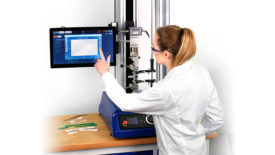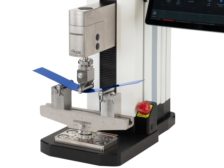Home » tensile testing
Articles Tagged with ''tensile testing''
Test & Inspection
A trifecta of solutions for catheter testing and innovation
By James Ritchey
Read More
See It at the Show
Force Gauge Is Suitable for Tension and Compression Testing
November 7, 2024
Test & Inspection
Materials Testing: Inside the Vascular Labyrinth
A trifecta of solutions for catheter testing and innovation.
August 22, 2024
Test & Inspection
Universal applications and implementations of UTMs
A universal tester can regularly be found implementing tension and compression applications in QC and R&D environments.
April 18, 2024
Test & Inspection
Crushing it: a granular breakdown of testing what shouldn’t break down
While tensile testing garners significant attention, compression testing is equally crucial.
January 26, 2024
Test & Inspection
Important Considerations for Tensile Testing Equipment in Aerospace Applications
The most powerful tool a company has is the ability to follow a component failure back to the batch of material it was made from.
August 3, 2023
Tensile Testing: A Gripping Story
Tensile testing is varied in purpose and industry specific. The manner of holding the test specimen and applying the axis of tensile force is what makes the application unique and enables quality assurance at almost any point in any product's lifecycle.
July 28, 2023
Materials Testing
The Relationship Between Residual Stress State and Quality
Designing in, manufacturing for, and measuring residual stresses may be the most effective way to produce quality parts.
November 14, 2022
Tensile Testing: A Compressed “How-To” Overview
Let's start with the purpose, the practical and theory test.
November 1, 2022
Test & Inspection
Navigating Supply Chain Challenges with Force Testing
Recent advancements in force measurement equipment allow quality professionals to better handle unpredictable testing demands.
May 5, 2021
Stay in the know with Quality’s comprehensive coverage of
the manufacturing and metrology industries.
eNewsletter | Website | eMagazine
JOIN TODAY!Copyright ©2025. All Rights Reserved BNP Media.
Design, CMS, Hosting & Web Development :: ePublishing









